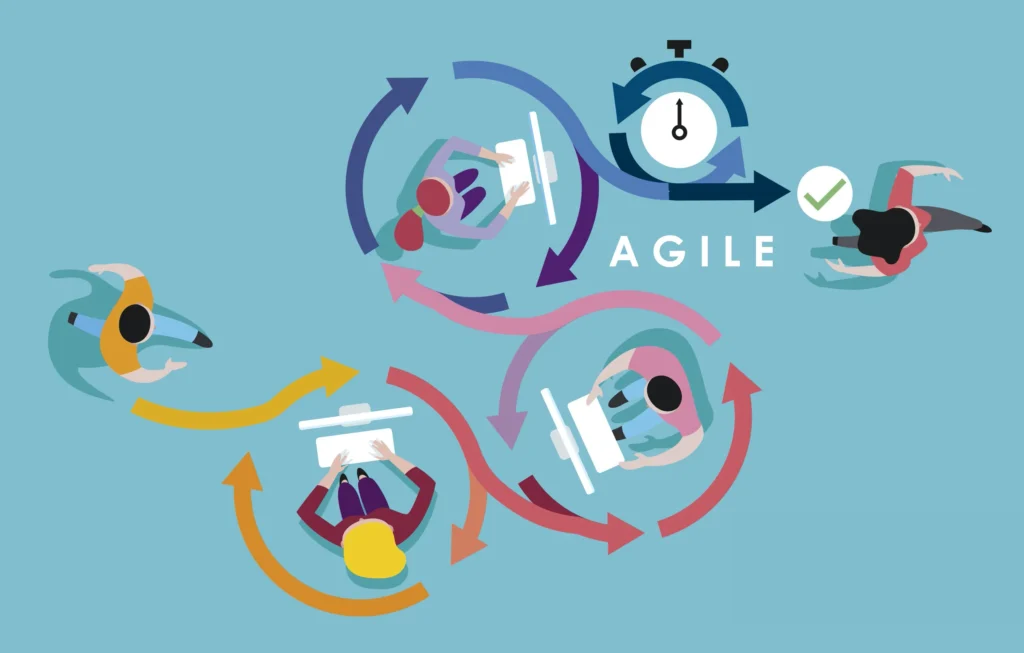
Agile development is fundamentally about the delivery of value to customer via a iterative and incremental process. This value can be a perceived or tangible value, depending on what the end goal is.
Hence, in order to measure the success of an Agile project or product, it is imperative to establish the objectives and end results that customers want. Just to be clear, customer in this context can refer to external customers who wants to look and feel a product or internal customers such as business units who is interested to examine and evaluate the value of a developed product (end result).

The success of an Agile project / product depends on identification, tracking and monitoring the right set of measurements that will mean value. These set of measurements should be SMART (specific, measurable, achievable, relevant and time-bound). Some example of measurements would be faster time-to-market or greater value that will increment the current price and even the quality of the end result.
Others such as sprint velocity, team capacity, cycle time, and defect rate are often used to track progress and identify areas for improvement in the agile development process.
In this blog post, I will examine two different type of measurements.
- KPIs or key performance indicators are focused on measuring the performance of teams within an agile methodology.
- OKRs or objectives and key results are aimed at the achievement of certain goals and objectives. It involves defining ambitious, measurable goals and tracking key results and its progress towards achieving those goals. OKRs are often used to align individual and team goals with overall organizational objectives.
Some key differences between agile KPIs and OKRs include:
- Focus: Agile KPIs focus on measuring team performance within the agile process, while OKRs focus on setting and achieving specific goals and objectives.
- Measurement: Agile KPIs typically measure performance using specific metrics, while OKRs focus on measuring progress towards specific goals and objectives.
- Alignment: OKRs are often used to align individual and team goals with overall organizational objectives, while agile KPIs are focused on improving the agile development process.
- Timeframe: Agile KPIs are typically measured over shorter timeframes (such as a single sprint), while OKRs are often measured over longer periods (such as a quarter or year).

Examples of measurements :
- Customer satisfaction : This can be measured through surveys or feedback from customers. It is important to get feedback from customers throughout the project to ensure that the team is delivering value and meeting their needs.
- The number of defects found and resolved could be another important and relevant measurement the success of an Agile project. This KPI is an indicator of the quality of the software being delivered. It is important to track defects and ensure that they are resolved in a timely manner.
- Cycle time is another measurement that can be used to measure the success of an Agile project. Cycle time measures the time it takes for a feature to go from idea to production. It is important to track cycle time and identify areas where it can be improved.
In conclusion, measuring the success of an Agile project involves establishing measurements that align with the project’s goals and tracking progress against them. Velocity, customer satisfaction, defects, and cycle time are all important factors that can be used to measure the success of an Agile project.
Lastly and importantly, it is always valuable to get feedback from customers throughout the project and to continuously improve processes to ensure that the team is delivering value to the customer.

Disclaimer: What I am sharing is purely from my point of view and experience working with various teams as a scrum master. It does not reflect anyone else’s opinion or endorses a framework.
What I present in my posts doesn’t necessarily mean that it is applicable to your work, organization and culture but I am glad if it aids you in your agile journey.
Sincerely and with many thanks for reading my articles, Jason.







